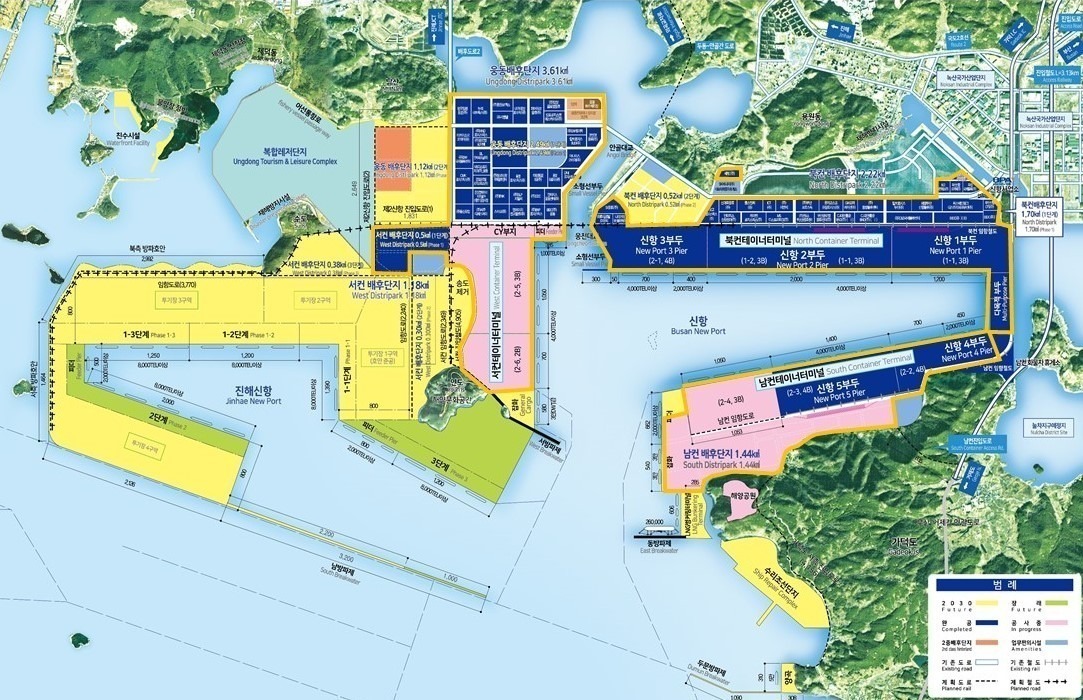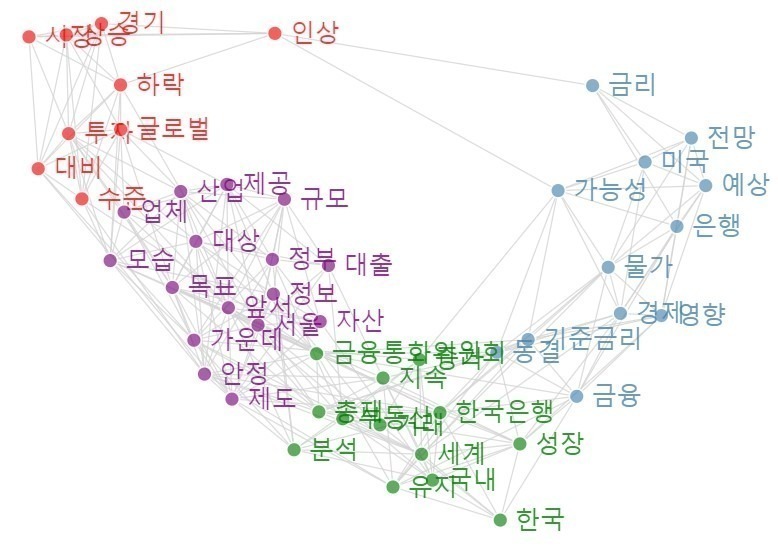[해외 DS] 아시아 AI 거버넌스, 과도한 경쟁보다 협력해야 할 때
권력 집중, 현지화, 배제 문제를 해결하기 위해서는 국가간 협력이 필요해 기존에 있는 아시아 연합 모임을 활용해 조율 논의를 추진할 수 있어 조율된 AI 거버넌스는 기술 환경의 변화에 맞춰 발 빠르게 움직여야
[해외DS]는 해외 유수의 데이터 사이언스 전문지들에서 전하는 업계 전문가들의 의견을 담았습니다. 저희 데이터 사이언스 경영 연구소 (GIAI R&D Korea)에서 영어 원문 공개 조건으로 콘텐츠 제휴가 진행 중입니다.

생성형 인공지능이 전 세계의 열렬한 호응을 얻고 있지만, 정책 입안자들은 AI 시스템이 국경을 넘어 시민들에게 미칠 영향에 대해 우려의 목소리를 내고 있다.
아시아 AI 거버넌스의 도전과제, 현지화 vs. 지역 협력
세계은행은 미국의 보호무역주의와 부채 증가의 영향으로 내년 동아시아 개발도상국 경제가 반세기 만에 가장 낮은 성장률을 기록할 것이라고 경고했다고 파이낸셜타임스가 10월 1일(현지시간) 보도했다. 최악의 경제 전망에 직면한 아시아에서 포용적이고 지속 가능한 성장을 이끌어낼 열쇠는 첨단 AI 시스템 개발을 포함해 디지털 혁명을 활용하기 위한 서비스 부문의 개혁일 것이다. 따라서 AI 거버넌스의 지역적 조율은 아시아에서 그 어느 때보다 중요한 화두다. 또한, AI를 위한 역내 조율된 협정을 통해 미국과 중국 간의 지정학적 경쟁이라는 가장 심각한 외교 리스크를 완화하는 동시에 중견국들이 어느 한쪽을 선택해야 하는 강제성을 줄이는 데 도움이 될 수 있다.
하지만 효과적인 AI 거버넌스는 근본적인 도전에 직면해 있다. 미국과 중국, 그리고 소수의 기술 인프라 기업이 AI에 대한 권력을 집중시키고 있는 것이 그중 하나다. 또 다른 문제는 각국 정부가 주요 디지털 자산을 현지화하고 보호하려는 경향이 강하다는 점이다. 대규모언어모델(LLM)의 인상적인 초기 성능을 미루어보아 AI 애플리케이션은 LLM 기반에 의존할 가능성이 점점 더 높아진다. 애석하게도 LLM은 최고의 자원을 보유한 기업만이 유지할 수 있는 데이터 및 연산 집약적인 기술이다. 이대로라면 ‘승자 독식’ 환경이 조성되고, AI 리더들은 그들이 축적하는 학습과 자본으로부터 불균형적인 혜택을 누리며 권력을 더욱 강화시킬 것이다. 이는 결과적으로 신규 진입자의 경쟁을 어렵게 하고, 공공 기관이 AI 시스템의 투명성과 책임성을 보장하기 어렵게 만든다.
한편 인공지능에 대한 권력이 집중되면서 아시아 태평양 지역의 일부 정부는 국가 정책을 통해 디지털 자산을 보호하고 현지화하려고 노력하고 있다. 결론부터 말하자면 현지화 조치는 AI 시스템에 부정적인 영향을 미친다. 현지화는 학습 데이터에 대한 접근성을 떨어뜨리고, 혁신 생태계를 고갈시키며, 사이버 보안 메커니즘의 파편화를 초래할 위험이 있기 때문이다. 역내포괄적경제동반자협정(RCEP) 무역 협정은 국가 안보를 이유로 데이터 현지화를 허용하는 전자상거래 정책을 통해 이러한 추세를 반영하고 있다. 게다가 미국은 더욱 적극적인 접근 방식을 취하고 있다. 그래픽 처리 장치(GPU)의 자국 내 생산, AI 혁신 생태계에 대한 투자, 중국으로 판매되는 하이엔드 GPU를 겨냥한 수출 규제는 현지화를 통해 미국 기술 기업의 AI 우위를 공고히 다져나갈 의도로 해석된다.
현지화에 대응할 수 있는 강력한 지역적 네트워크가 없다면 중국, 인도, 인도네시아 등 잠재적 AI 경쟁국들도 이에 대응하지 않을 수 없는 노릇이다. 설상가상으로 데이터, 컴퓨팅 성능, 인재 확보에 대한 접근성이 가장 낮은 가난한 소규모 국가들은 AI 산업에 참여할 수 있는 선택지가 줄어들게 될 것이 불 보듯 뻔하다. 따라서 아시아의 디지털 격차는 곧 ‘알고리즘 격차’로 이어질 가능성이 매우 높다. 광대역 연결성이 향상되었지만, 아세안 인구의 약 61%는 인터넷 접속이 가능한 범위 내에 거주하지만, 아직도 인터넷을 사용하지 않는 것으로 추정된다. 몇몇 국가는 적절한 데이터 보호법과 AI 전략도 부족한 실정이다. 더군다나 아시아의 여성, 농촌 거주자, 원주민은 여전히 AI 시스템의 혜택을 누리는 데 있어 체계적으로 배제되어 있다.
권력 집중·현지화·배제, ‘3대 과제’ 해결을 위한 협력 방안
정부, 금융, 중소기업, 시민들은 AI 시스템의 권력의 집중, 현지화, 배제의 균형을 맞추기 위해 협력 방안을 모색해야 한다. 권력이 집중되는 문제를 해결하기 위해서는 형평성을 높이는 새로운 데이터 소유권 및 가치 평가 패러다임을 촉진하는 것이 중요하다. 자본 공급자는 대규모 독점 AI 모델과 중앙집중식 클라우드 컴퓨팅 인프라에 대한 의존도를 줄이면서 중소기업과 커뮤니티가 주도하는 AI 시스템 개발을 지원할 수 있다. 또한, 제삼자 AI 감독에 대한 지역적 조정을 통해 국가 차원의 막대한 규제 비용을 낮출 수도 있다. 싱가포르의 AI 검증 재단(Singapore AI Verify Foundation)은 AI 시스템에 대한 광범위한 이해관계자의 참여를 확대하는 고무적인 민관 파트너십을 성사했다. 글로벌 규제 샌드박스(유예제도) 이니셔티브가 아시아에서 시작될 수도 있음을 시사하는 대목이다.
국경을 넘나드는 데이터 흐름에 대한 기존의 양자 및 다자간 무역 협정을 업데이트하는 것부터 시작해, 현지화의 균형을 맞춰 나갈 수 있다. 다자간 무역 규칙에서 국가 안보 면제를 검토해 보면 자유화할 수 있는 AI 관련 자산을 구분하는 데 도움이 된다. 기존의 소통 무대를 활용하는 것도 좋은 방법이다. 세계무역기구의 전자상거래에 관한 공동 이니셔티브는 아시아 태평양 국가들이 공동 AI 거버넌스 협력을 위해 추진력을 얻을 수 있는 포럼 중 하나다. 아울러 상호의존적 표준기구를 세우면 국경을 넘나드는 데이터 흐름의 자유화가 책임성을 훼손하지 않도록 중재 및 보장할 수 있게 된다. 비현실적인 협력 제도가 아니라, 경제 둔화 전망의 돌파구를 찾기 위한 전략적 협력이라는 점을 강조하는 바다.
배제 문제를 해결하기 위해 정책 리더들은 아세안 및 태평양 도서국들과 협력하여 규제 및 AI 전략을 강화해야 한다. 중소기업 자금 조달과 디지털 역량 강화는 지역 AI 생태계에 공평하게 참여할 수 있도록 지원하는 데 핵심적인 이무를 수행할 것이다. 또한 자원봉사자와 개발 실무자들은 AI 시스템에 대한 시민 참여를 높이고 디지털 거버넌스에 대한 참여 인식을 높이기 위한 지역 주도 캠페인을 지원할 수 있다.
AI 시스템의 집중, 현지화, 배제의 문제에 대한 쉬운 해답은 없다. 하지만 조율된 AI 거버넌스는 다양한 지역 이해관계자들이 AI 시스템을 적극적으로 관리하도록 동기를 부여하는 동시에, 리스크에 대한 가시성을 확보하는 데 도움을 준다. 효과적인 협력을 위해 AI 거버넌스는 기술 환경이 진화하는 속도만큼 발 빠르게 움직여야 한다. 위기를 대비하지 않은 국가들의 경제 성적표가 나왔을 땐 적기를 놓쳤을 확률이 높다. 기술 혁신이라는 공통된 목표 아래 각자의 디지털 비교우위로 적극적으로 협력해야 할 시기다.
Everyone wins with better Asian AI governance
Generative artificial intelligence (AI) has captured the world’s imagination. It has also been greeted with alarm, with policymakers concerned about its control by non-state actors and the impact of AI systems on citizens within and across national borders.
Most AI experts agree that the world needs to work together to promote the best and prevent the worst. But China announcing its Global AI Governance Initiative two weeks before a UK-hosted AI Safety Summit and one day after the United States further tightened export controls over advanced computing chips raises questions about the effectiveness of multilateral efforts to develop trustworthy, inclusive and environmentally sustainable AI systems.
Regional coordination of AI governance is nowhere more crucial than in Asia.
With Asia facing one of its worst economic outlooks in half a century, the key to inclusive and sustainable growth in the region will be reforming the service sector to harness the digital revolution, including through the development of advanced AI systems. Coordinated regional arrangements for AI can also help mitigate the most acute risks of geostrategic competition between the United States and China while reducing the need for middle powers to choose sides.
Effective AI governance faces fundamental challenges. The concentration of power over AI inputs by the United States, China and a handful of their technology infrastructure firms is just one. Another problem is governments’ tendency to localise and protect key digital assets. Meanwhile, Asia’s women, rural residents, and indigenous populations remain systematically excluded from accessing the benefits of AI systems.
There are huge differences in state perspectives and capabilities for dealing with AI-related challenges, yet the region already possesses the raw ingredients required to shape a regional framework for AI governance. These include a wide variety of flexible digital policy tools and industry engagement strategies that can be upgraded and flexibly deployed.
A foundational challenge for AI governance in Asia is that a handful of US and Chinese technology infrastructure companies enjoy near-monopoly power over most key inputs. The impressive early performance of large language models (LLMs) shows they could become the foundational infrastructure on which AI applications rely. But LLMs depend on data and computation-intensive machine learning that only the best-resourced companies can maintain.
This signals a worrying ‘winner takes most’ environment. AI leaders benefit disproportionately from the learning and capital they accrue, further concentrating power. This concentration makes it difficult for new entrants to compete and public actors to ensure transparency and accountability of AI systems.
With power over AI inputs concentrated, some governments across the Asia Pacific are seeking to protect and localise their digital assets through national policy. Localisation measures have negative impacts on AI systems. Localisation reduces access to training data, starves innovation ecosystems and risks fragmentation of cybersecurity mechanisms.
The Regional Comprehensive Economic Partnership (RCEP) trade agreement mirrors this trend, with its chapter on e-commerce allowing data localisation carveouts on national security grounds. The United States has taken an even more active approach. Investments in onshore production of graphics processing units (GPUs), AI innovation ecosystems and export controls targeting high-end GPUs sold to China signal its intention to extend US technology companies’ AI advantages through localisation.
Absent a robust regional framework to counteract localisation, it will be difficult for potential AI competitors such as China, India and Indonesia not to respond in kind. Smaller and poorer countries with the least access to data, computational capacity and talent will be left with fewer options to participate in the AI industry.
Southeast Asia’s comparatively weak AI readiness risks the region’s digital divides becoming ‘algorithmic divides’. While broadband connectivity has increased, an estimated 61 per cent of ASEAN populations do not use the internet despite living within range of internet access. Several countries lack adequate data protection laws and AI strategies.
Governments, capital providers, small- and medium-enterprises (SMEs) and citizens can coordinate strategies that counterbalance concentration, localisation, and exclusion in AI systems.
Key to addressing concentration will be promoting new paradigms of data ownership and valuation that increase equity, including experimentation with data cooperatives and data unions. Capital providers can support the development of SME- and community-driven AI systems while reducing reliance on largescale proprietary AI models and centralised cloud computing infrastructure.
Regional coordination of third-party AI oversight can lower the prohibitive costs of regulation at the national level. Existing national policy tools offer starting points for a regional approach that places responsibility on technology firms. Singapore’s AI Verify Foundation is an encouraging public–private partnership that increases broad stakeholder participation in AI systems. A proposed global regulatory sandbox initiative could even begin in Asia.
Counterbalancing localisation can begin with updating existing bilateral, minilateral and multilateral trade agreements for cross-border data flows. Examining national security exemptions in multilateral trade rules can help distinguish which AI-relevant assets could be liberalised. The World Trade Organization’s joint initiative on e-commerce is a forum in which Asia Pacific nations can push to gain momentum. A regional interdependent standards body could ensure liberalisation of cross-border data flows does not compromise accountability.
To address exclusion, regulatory leaders can work with ASEAN and Pacific Island nations to strengthen regulations and AI strategies. SME financing and digital capacity building will be key to supporting equitable participation in regional AI ecosystems. Donors and development practitioners can also support locally led efforts to increase citizen participation and representation in AI systems and engagement with digital governance.
There are no easy answers to questions of concentration, localisation and exclusion in AI systems. But coordinated AI governance can create incentives for diverse regional stakeholders to actively steward AI systems while increasing transparency around risks.
In practice, AI governance will need to move as fast as the technology landscape is evolving.



























